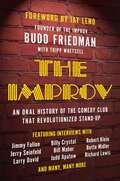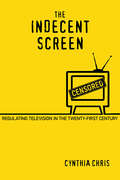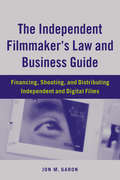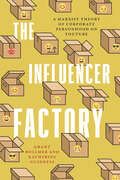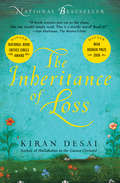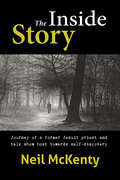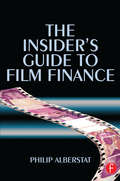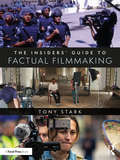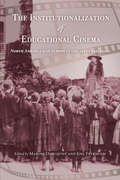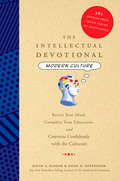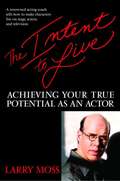- Table View
- List View
The Improv Dictionary: An A to Z of Improvisational Terms, Techniques, and Tools
by David CharlesThe Improv Dictionary: An A to Z of Improvisational Terms, Techniques, and Tools explores improvisational approaches and concepts drawn from a multitude of movements and schools of thought to enhance spontaneous and collaborative creativity.This accessible resource reveals and interrogates the inherited wisdoms contained in the very words we use to describe modern improv. Each detailed definition goes beyond the obvious clichés and seeks a nuanced and inclusive understanding of how art of the moment can be much more than easy laughs and cheap gags (even when it is being delightfully irreverent and wildly funny). This encyclopedic work pulls from a wide array of practitioners and practices, finding tensions and commonalities from styles as diverse as Theatresports, Comedysportz, the Harold, narrative long-form, Playback Theatre, and Boal’s Theatre of the Oppressed. Entries include nuanced definitions, helpful examples, detailed explorations of the concepts in practice, and framing quotes from a leading practitioner or inspirational artistic voice.The Improv Dictionary offers valuable insights to novice improvisers taking their first steps in the craft, seasoned performers seeking to unlock the next level of abandon, instructors craving a new comprehensive resource, and scholars working in one of the numerous allied fields that find enrichment through collaborative and guided play.Each significant entry in the book is also keyed to an accompanying improv game or exercise housed at www.improvdr.com, enabling readers to dig deeper into their process.
The Improv: An Oral History of the Comedy Club that Revolutionized Stand-Up
by Budd Friedman Tripp WhetsellFeatured in the New York Times 2017 "Holiday Gift Guide for Hardcover Fans" Get an insider's oral history of the World's most iconic comedy club, featuring exclusive interviews with today's most hilarious stars recalling their time on stage (and off) at the Improv. In 1963, 30-year-old Budd Friedman—who had recently quit his job as a Boston advertising executive and returned to New York to become a theatrical producer—opened a coffee house for Broadway performers called the Improvisation. Later shortened to the Improv, its first seedy West 44th Street location initially attracted the likes of Judy Garland, Liza Minnelli, Albert Finney, and Jason Robards, as well as a couple of then-unknowns named Dustin Hoffman and Bette Midler. While it drew near-capacity crowds almost from day one, it wasn't until comedians began dropping by to try out new material that the Improv truly hit its stride. The club became the first venue to present live stand-up in a continuous format, and in the process reinvented the art form and created the template for all other comedy clubs that followed. From the microphone to the iconic brick wall, the Improv has been the launching pad for practically every major name in American comedy over the last five-plus decades. Now, in The Improv, Friedman, along with a Who's Who of his most famous alumni—including Jay Leno, Jerry Seinfeld, Jimmy Fallon, Larry David, Billy Crystal, Lily Tomlin, Judd Apatow, Al Franken, Paul Reiser, Howie Mandel, Bob Saget, Drew Carey, and many more—tell it like it was in the first-ever oral history of how this game-changing comedy club came to be. The Improv gives readers an exclusive look at what really happened onstage and off-mic at one of America's most venerable institutions.
The Improvisation Studies Reader: Spontaneous Acts
by Ajay Heble Rebecca CainesImprovisation is a performance practice that animates and activates diverse energies of inspiration, critique, and invention. In recent years it has coalesced into an exciting and innovative new field of interdisciplinary scholarly inquiry, becoming a cornerstone of both practical and theoretical approaches to performance. The Improvisation Studies Reader draws together the works of key artists and thinkers from a range of disciplines, including theatre, music, literature, film, and dance. Divided by keywords into eight sections, this book bridges the gaps between these fields. The book includes case studies, exercises, graphic scores and poems in order to produce a teaching and research resource that identifies central themes in improvisation studies. The sections include: Listening Trust/Risk Flow Dissonance Responsibility Liveness Surprise Hope Each section of the Reader is introduced by a newly commissioned think piece by a key figure in the field, which opens up research questions reflecting on the keyword in question. By placing key theoretical and classic texts in conversation with cutting-edge research and artists’ statements, this book answers the urgent questions facing improvising artists and theorists in the mediatized Twenty-First Century.
The Incomplete History of Secret Organizations
by Joe Tracz'LOVING this new coffee table book chronicling the entire Series Of Unfortunate Events production... You can even peel off the label on the cover, but don't 'cuz, you know, my face..!'Neil Patrick HarrisThe perfect companion to Netflix's adaptation of A Series of Unfortunate Events, The Incomplete History of Secret Organizations is a fourth-wall-breaking deep dive into the hilariously twisted saga and the creative team that brought it to life on the screen. Discover a host of insider secrets about the show and the Baudelaire family with interviews from the cast and crew, as well as everything from exclusive looks at storyboards and sketches to the Baudelaire orphans' pasta puttanesca recipe. Foreword by Neil Patrick Harris Profiles of characters and cast Interviews with cast and crew Never-Before-Seen storyboards and sketches Annotated script excerpts Behind-the-Scenes photographs Violet Baudelaire's most intriguing inventions Guide to the show's hidden clues and Easter eggs Lyrics to the opening title songs Glossary of terms defined in the show The Baudelaires' Recipe for pasta puttanesca
The Incomplete History of Secret Organizations: An Utterly Unreliable Account of Netflix's A Series of Unfortunate Events
by Neil Patrick Harris Joe Tracz<P><P><i>Advisory: Bookshare has learned that this book offers only partial accessibility. We have kept it in the collection because it is useful for some of our members. To explore further access options with us, please contact us through the Book Quality link. Benetech is actively working on projects to improve accessibility issues such as these.</i> <P><P>This mysterious illustrated tie-in to Netflix's award-winning A Series of Unfortunate Events--featuring an introduction by Count Olaf's legal representative, Neil Patrick Harris--shares insider secrets about the Baudelaire family and the making of the show. In every library there is a single book that can answer the question that burns like a fire in the mind...In this collector's companion you will discover never-before-seen photographs, never-before-told stories, and never-before, revealed secrets spanning all three seasons of the hilariously twisted, critically acclaimed hit series. You will encounter original concept art, annotated script excerpts, and interviews with the creative team and all-star cast, as well as glossaries, recipes, lyric sheets, hidden Easter eggs, shocking backstories, and suspicious pages from the titular tome, unredacted, and revealed here for the first time.Featuring interviews with: Tony HaleDaniel HandlerAasif MandviSara RueBarry SonnenfeldPatrick WarburtonBo WelchAlfre Woodardand more...Perhaps you are wondering how a noble person such as yourself might become a member of a secret organization. Like so many things in life, it starts by picking up the right book. So go ahead, read at your own risk.
The Incredible Talking Machine
by Jenni SpanglerPull back the curtain and enter a world where mystery and magic take centre stage . . . Twelve-year-old Tig works at the Theatre Royale, cleaning, selling tickets and doing anything else that is asked of her by her tyrannical boss, Mr Snell. But Tig will do whatever it takes to get closer to her dream – to become a Stage Manager and spend her days inventing new ways to imagine and build the intricate machinery and props that bring the exciting productions to life! But when a strange new act – a talking machine – arrives at the Theatre Royale, it moves and behaves in a way that Tig just can&’t work out. It&’s as though it&’s alive somehow . . . And when the machine appears to be hiding a dangerous secret, Tig must race against time to solve the mystery, before everything and everyone she cares about is lost forever. A gloriously gothic adventure from an original new voice in middle-grade. A gloriously gothic adventure with a magical twist from an original new voice in middle-grade. Perfect for fans of Michelle Harrison, Sophie Anderson and Emma Carroll. Praise for Jenni Spangler&’s debut novel, THE VANISHING TRICK: A thrilling, original, evocative and eerie tale - I adored it!&’ Michelle Harrison, author of A Pinch of Magic 'A thrilling page-turner. Madame Pinchbeck is a gloriously Dickensian villain&’ Abi Elphinstone, author of Sky Song 'Ghosts, gadgets, likeable villains and unlikely heroes: The Vanishing Trick is a dark and dazzling adventure&’ Emma Carroll, author of Letters from the Lighthouse 'A completely enthralling tale, oozing with atmosphere and originality&’ Catherine Doyle, author of The Storm Keeper's Island
The Incredible True Story of the Making of the Eve of Destruction
by Amy BrashearArkansas, 1984: The town of Griffin Flat is known for almost nothing other than its nuclear missile silos. MAD—Mutually Assured Destruction—is a fear every local lives with and tries to ignore. Unfortunately that’s impossible now that film moguls have picked Griffin Flat as the location for a new nuclear holocaust movie, aptly titled The Eve of Destruction. When sixteen-year-old Laura Ratliff wins a walk-on role (with a plus-one!) thanks to a radio call-in contest, she is more relieved than excited. Mingling with Hollywood stars on the set of a phony nuclear war is a perfect distraction from being the only child in her real nuclear family—which has also been annihilated. Her parents are divorced, and her mother has recently remarried. Her father, an officer in the Strategic Air Command, is absent . . . except when he phones at odd hours to hint at an impending catastrophe. But isn’t that his job? Laura’s only real friend is her new stepbrother, Terrence. She picks him as her plus-one for the film shoot, enraging her fair-weather friends. But their anger is nothing compared to what happens on set after the scripted nuclear explosion. Because nobody seems to know if a real nuclear bomb has detonated or not.
The Indecent Screen: Regulating Television in the Twenty-First Century
by Cynthia ChrisThe Indecent Screen explores clashes over indecency in broadcast television among U.S.-based media advocates, television professionals, the Federal Communications Commission, and TV audiences. Cynthia Chris focuses on the decency debates during an approximately twenty-year period since the Telecommunications Act of 1996, which in many ways restructured the media environment. Simultaneously, ever increasing channel capacity, new forms of distribution, and time-shifting (in the form of streaming and on-demand viewing options) radically changed how, when, and what we watch. But instead of these innovations quelling concerns that TV networks were too often transmitting indecent material that was accessible to children, complaints about indecency skyrocketed soon after the turn of the century. Chris demonstrates that these clashes are significant battles over the role of family, the role of government, and the value of free speech in our lives, arguing that an uncensored media is so imperative to the public good that we can, and must, endure the occasional indecent screen.
The Independent Filmmaker's Law and Business Guide: Financing, Shooting, and Distributing Independent Films and Series
by Jon M GaronToday's independent and digital filmmaking demands a clear guide to the business and legal aspects of the art. What fundraising options are available to a filmmaker? When should a filmmaker establish a corporation or limited liability company? How do screenwriters protect their work? What are a director's legal obligations to the producer, cast, and crew--and what are their obligations in return? This indispensable resource addresses the legal, financial, and organizational questions that an independent or guerrilla filmmaker must face, and the problems that will doom a project if left unanswered. It demystifies issues such as founding a film company, obtaining financing, preparing a budget, securing locations, shooting, granting screen credits, and distributing, exhibiting, and marketing a film. Newly updated and expanded, this third edition explores concepts such as integrating social media; crowd funding and nonprofit status funding; diversity, inclusion, and compensation equity; and distribution via streaming services. Six appendixes provide sample contracts, copyright circulars, Documentary Filmmakers' Statement of Best Practices in Fair Use, and more.
The Independent Filmmaker's Law and Business Guide: Financing, Shooting, and Distributing Independent and Digital Films
by Jon M. GaronPreparing independent or guerrilla filmmakers for the legal, financial, and organizational questions that can doom a project if unanswered, this guide demystifies issues such as developing a concept, founding a film company, obtaining financing, securing locations, casting, shooting, granting screen credits, distributing, exhibiting, and marketing a film. Updated to include digital marketing and distribution strategies through YouTube or webisodes, it also anticipates the "problems" generated by a blockbuster hit: sound tracks, merchandizing, and licensing. Six appendices provide sample contracts, copyright forms and circulars, Writer's Guild of America definitions for writing credits, and studio contact information.
The Influencer Factory: A Marxist Theory of Corporate Personhood on YouTube
by Grant Bollmer Katherine GuinnessInfluencers are more than social media personalities who attract attention for brands, argue Grant Bollmer and Katherine Guinness. They are figures of a new transformation in capitalism, in which the logic of the self is indistinguishable from the logic of the corporation. Influencers are emblematic of what Bollmer and Guinness call the "Corpocene": a moment in capitalism in which individuals achieve the status of living, breathing, talking corporations. Behind the veneer of leisure and indulgence, most influencers are laboring daily, usually for pittance wages, to manufacture a commodity called "the self"—a raw material for brands to use—with the dream of becoming corporations in human form by owning and investing in the products they sell. Refuting the theory that digital labor and economies are immaterial, Bollmer and Guinness search influencer content for evidence of the material infrastructure of capitalism. Each chapter looks to what literally appears in the backgrounds of videos and images: the houses, cars, warehouses, and spaces of the market that point back to the manufacturing and circulation of consumer goods. Demonstrating the material reality of producing the self as a commodity, The Influencer Factory makes a crucial contribution to our understanding of contemporary economic life.
The Inherent Potential in Art Performance: To Critically Challenge Art Traditions in Scenes of Love and Sexual Desire (Routledge Advances in Theatre & Performance Studies)
by Iris JulianThis book spotlights artworks and art performances whose common denominator is the theme of (self-)representation of artists in the 'woman' category in scenes of love and sexuality. Pursuing the research practice of deep drilling, this study presents various methodologies and research directions to create diverse perspectives on the selected artworks. This book combines historical outlines based on art history, visual culture studies, new methodologies in theatre studies and digressions into sociology. Philosophical readings will complement the resulting multiple perspective, in which figures of thought such as transimmanence, the theory of performativity and body-mind dualism are of specific interest. This research brings to the fore networks of sedimented and entangled histories and their role in shaping our ways of seeing. This study will be of great interest to scholars and students in dance, dance performance and art performance.
The Inheritance of Loss (Popular Penguins Series)
by Kiran DesaiIn a crumbling, isolated house at the foot of Mount Kanchenjunga in the Himalayas lives an embittered judge who wants only to retire in peace, when his orphaned granddaughter, Sai, arrives on his doorstep. The judge’s cook watches over her distractedly, for his thoughts are often on his son, Biju, who is hopscotching from one gritty New York restaurant to another. Kiran Desai’s brilliant novel, published to huge acclaim, is a story of joy and despair. Her characters face numerous choices that majestically illuminate the consequences of colonialism as it collides with the modern world.
The Inner Voice: The Making of a Singer
by Renee FlemingThe fascinating personal story of one of the most celebrated talents in today's music scene The star of the Metropolitan Opera's recent revival of Dvorak's Rusalka, soprano Renée Fleming brings a consummately beautiful voice, striking interpretive talents, and compelling artistry to bear on performances that have captivated audiences in opera houses and recital halls throughout the world. In The Inner Voice--a book that is the story of her own artistic development and the "autobiography" of her voice--this great performer presents a unique and privileged look at the making of a singer and offers hard-won, practical advice to aspiring performance artists everywhere. From her youth as the child of two singing teachers through her years at Juilliard, from her struggles to establish her career to her international success, The Inner Voice is a luminous, articulate, and candid self-portrait of a contemporary artist--and the most revelatory examination yet of the performing life.
The Inside Story: Journey of a former Jesuit priest and talk show host towards self-discovery
by Neil MckentyA book for anyone on the journey to wholeness. A story of toxic religion, sex and celibacy, drinking and depression, and how they led towards self-discovery and spiritual awakening. “A compelling testimony to our capacity for spiritual transformation in the face of overwhelming odds. McKenty’s story is both inspirational and gut-wrenchingly honest. Highly recommended.” - Tom Harpur, Syndicated Columnist and Bestselling Author
The Insider's Guide to Film Finance
by Philip AlberstatFinancing an independent feature film production is a highly complex process. This book demystifies the legal and commercial implications of a film from start to finish. It provides a detailed survey of each of the processes and players involved, and analyses of the legal and commercial issues faced by all of the participants in a film financing transaction. Packed with legal advice and straight forward explanations this is an essential reference for filmmakers worldwide.With contributions from leading professionals around the world, and an up-to-date international approach, this is an invaluable tool for producers, and others involved in the film industry.Includes: Case studies, Sample Recoupment Schedules, Alternative Financing Models, Glossary of Film Financing and Banking TermsPhilip Alberstat is a media finance and production lawyer specialising in film, television and broadcasting. He has worked on films such as The 51st State, Goodbye Mr Steadman, Tooth and numerous television programmes and series. He is on the editorial board of Entertainment Law Review and is the author of The Independent Producers Guide to Film and TV Contracts (2000), and Law and the Media (2002).Philip is involved in raising finance for film and television productions and negotiating and structuring film and television deals. He undertakes corporate and commercial work and handles the intellectual property aspects of broadcasting and finance transactions. He has also executive produced numerous film and television productions. He won an Emmy Award in 2004 as an Executive Producer of the Film, "The Incredible Mrs. Ritchie".Philip joined Osborne Clarke as a partner in February 2002. Prior to that he was Head of Legal and Business Affairs with one of the largest independent TV production companies in the UK. He was previously Head of Media at Baker & McKenzie and began his career at Olswang. He was winner of the Lawyer/Hifal Award for Solicitor of the year in 1997 and is listed in Legal Experts in the area of Film Finance/Media.
The Insider's Guide to Independent Film Distribution
by Stacey ParksInnovation in technology means that almost anyone can make an independent film these days. Although this may be good news for aspiring filmmakers, it also means that the oversupply of independent films on the market has caused acquisition prices to dramatically decrease. As a result, producers and investors rarely recover their initial investment in the films they make. But don't be discouraged! Use this book to learn the realities of the market in advance and map out a winning distribution plan. This comprehensive manual for filmmakers and producers dedicated to film distribution and the marketplace could mean the difference between getting your film out to the public and keeping it "in the can." Learn how to sell your movie to a studio, a cable network, a video distributor, or an international buyer. Self-distribution and other alternatives to traditional distribution are also considered. In addition, you'll hear some success stories from producers and hear exactly what buyers are seeking. Stacey Parks has worked with hundreds of hungry filmmakers to get their films a distribution deal and knows how frustrating the whole process can be. Let her show you how you can take control of your filmmaking career and start getting your work seen by audiences with a few little-known distribution secrets. Features include: . Interviews and case studies with producers and distributors. Ten ways to market your film for self-distribution. Sales projections per territory. Distribution resources listings. Negotiation tips for distribution agreements. Sample distribution agreements. What you must know to get your independent film distributed. Written by a distributor who knows the process inside and out. Interviews with buyers and acquisitions executives from every sector of the business on what kinds of films they look for, what they're sick of seeing, and how their acquisitions processes work. Website features sample distribution agreements, budgets, and more! New to this edition:. Completely updated for modern distribution practices (broadcast, DVD, VOD, and other kinds of distribution deals). New coverage on crowd-funding, social media, film marketing, and deal memos . Get the best inside distribution secrets from brand new interviews with an international cast of directors, producers, and distribution experts who share their experiences. Companion website features helpful downloadable forms and templates, sample distribution memos, and a great resource section
The Insider's Guide to Inside No. 9: Behind the Scenes of the Award Winning BBC TV Series
by Mark SalisburyThe ultimate companion to unlock what lurks Inside No. 9Welcome, reader, to the experience of a lifetime: a behind-the-scenes tour of the remarkable Bafta award-winning series. This show-by-show guide reveals the genesis of each episode's idea through to the scripting, casting, design, direction, and production - where you'll have access to the minds and imaginations of creators Reece Shearsmith and Steve Pemberton.Filled with the show's dark humour and behind-the-scenes photographs, production stills, mood boards and concept drawings, you'll find yourself delighted and disturbed in equal measure. Every episode from the first five series will be covered by interviews with key creatives and discussion of the inspiration and creation behind every moment.Are you ready to step through the door marked No. 9?
The Insiders' Guide to Factual Filmmaking
by Tony StarkThe Insiders’ Guide to Factual Filmmaking is an accessible and comprehensive ‘how to’ guide about the craft of making documentaries for TV, online or social media. Filmmaker Tony Stark distils a long career at the BBC and as an independent producer to explain the conceptual, visual, editorial and organisational skills needed to make impactful and stylish factual films. Interviews with top industry professionals in the UK and US - commissioners, executive producers, filmmakers, strand editors and media lawyers – add valuable insight and authority to this book. For more experienced filmmakers The Insiders’ Guide tells you how to get the green light for undercover investigations, how to tell film stories online and on social media, and how to budget a factual film. This is a key text for anyone who wants to succeed in the rapidly changing, competitive freelance markets in Britain and America. It provides expert guidance to students on filmmaking courses, journalists wanting to move from print to video and non-professionals with an interest in film-making. Whatever the final destination of your film – and whatever the budget - The Insiders’ Guide provides a vital roadmap. The book’s accompanying website is a ‘show-me’ resource for new directors: with 24 specially-shot film clips illustrating the key rules of filmic grammar and sequence shooting – together with downloadable versions of essential production forms.
The Institutional Development of Podcasting: From Participatory Practice to Platform Content (Disruptions)
by Aske Kammer Thomas Spejlborg SejersenReferring back to the early 2000s, this book traces the development of podcasting from a “do-it-yourself” medium by amateurs into its current environment, where a wide variety of individuals, organizations, and platforms operate in an increasingly crowded and competitive market.Through original case studies of shows and platforms including "The Daily" and Spotify, the authors explore the processes and effects of commercialization, platformization, and datafication in the industry. Drawing on institutional theory and the growing body of scholarly literature about podcasting, they examine the shifts and reorientations in institutional logics that characterize podcasting and present the different types of actors that operate in the commercial and noncommercial podcast markets.The Institutional Development of Podcasting will be of interest to advanced students and researchers of audio media, journalism, and media industries.
The Institutionalization of Educational Cinema: North America and Europe in the 1910s and 1920s
by Marina Dahlquist and Joel FrykholmEssays by scholars on how film has been used by schools, libraries, governments, and organizations for educational purposes.The potential of films to educate has been crucial for the development of cinema intended to influence culture, and is as important as conceptions of film as a form of art, science, industry, or entertainment. Using the concept of institutionalization as a heuristic for generating new approaches to the history of educational cinema, contributors to this volume study the co-evolving discourses, cultural practices, technical standards, and institutional frameworks that transformed educational cinema from a convincing idea into an enduring genre. The Institutionalization of Educational Cinema examines the methods of production, distribution, and exhibition established for the use of educational films within institutions—such as schools, libraries, and industrial settings—in various national and international contexts and takes a close look at the networks of organizations, individuals, and government agencies that were created as a result of these films’ circulation. Through case studies of educational cinemas in different North American and European countries that explore various modes of institutionalization of educational film, this book highlights the wide range of vested interests that framed the birth of educational and nontheatrical cinema.
The Institutionalization of Educational Cinema: North America and Europe in the 1910s and 1920s
by Marina Dahlquist and Joel FrykholmEssays by scholars on how film has been used by schools, libraries, governments, and organizations for educational purposes.The potential of films to educate has been crucial for the development of cinema intended to influence culture, and is as important as conceptions of film as a form of art, science, industry, or entertainment. Using the concept of institutionalization as a heuristic for generating new approaches to the history of educational cinema, contributors to this volume study the co-evolving discourses, cultural practices, technical standards, and institutional frameworks that transformed educational cinema from a convincing idea into an enduring genre. The Institutionalization of Educational Cinema examines the methods of production, distribution, and exhibition established for the use of educational films within institutions—such as schools, libraries, and industrial settings—in various national and international contexts and takes a close look at the networks of organizations, individuals, and government agencies that were created as a result of these films’ circulation. Through case studies of educational cinemas in different North American and European countries that explore various modes of institutionalization of educational film, this book highlights the wide range of vested interests that framed the birth of educational and nontheatrical cinema.
The Intellectual Devotional: Revive Your Mind, Complete Your Education, and Converse Confidently with the Cul turati (The Intellectual Devotional Series)
by David S. Kidder Noah D. OppenheimIn the tradition of the instant bestsellers The Intellectual Devotional and The Intellectual Devotional: American History comes the third installment in this indispensable series. <P><P> In The Intellectual Devotional: Modern Culture, authors David S. Kidder and Noah D. Oppenheim explore the fascinating world of contemporary culture to offer 365 daily readings that provide the essential references needed to navigate the world today. <P><P>Quench your intellectual thirst with an overview of the literature, music, film, personalities, trends, sports, and pop references that have defined the way we live. From the Slinky to Star Wars; Beatlemania to Babe Ruth; flappers to fascism—refreshing your memory and dazzling your friends has never been easier, or more fun. <P>Whether you're a trivia genius, pop-culture buff, or avid reader, you'll be riveted by this comprehensive journey through contemporary culture.
The Intent to Live: Achieving Your True Potential as an Actor
by Larry Moss"I call this book The Intent to Live because great actors don't seem to be acting, they seem to be actually living." -Larry Moss, from the Introduction. When Oscar-winning actors Helen Hunt and Hilary Swank accepted their Academy Awards, each credited Larry Moss's guidance as key to their career-making performances.
The Interactive Documentary in Canada
by Michael Brendan Baker and Jessica MulvogueInteractive documentary emerged rapidly from a constellation of changing technologies and practices to much excitement, yet its history is short and its future uncertain. In the mid-2010s Canada was a world leader in the creation of i-docs. Less than a decade later technological obsolescence has rendered many of these celebrated projects inaccessible, while rapid digital innovation continues to change the i-doc form and its modes of experience.The Interactive Documentary in Canada captures this transitional moment in documentary filmmaking and media production. Bringing together a range of historical, theoretical, and critical approaches, this collection examines the past – and the imagined future – of a nonfiction storytelling phenomenon that has Canadian institutions, figures, and works at its centre. Embracing a polyphonic conception of interactive documentary, the volume includes explorations of web-based, app-based, installation, and virtual reality works that push the boundaries of what is understood as documentary cinema. Leading documentary scholars and makers consider the historical and technological contexts of i-doc production, innovation, and exhibition; the political and pedagogical potential of the genre; the ethics of the i‐doc experience; and the format’s future lifespan in the contemporary media landscape.The Interactive Documentary in Canada establishes a place for the i-doc in the history of Canadian film, highlighting the genre’s significant impact on the National Film Board of Canada and on contemporary global documentary media.

